Acoustic sensors enable efficient and non-invasive monitoring of a wide range of species, including many that are difficult to monitor in other ways. Although they were initially limited in application scope largely due to cost and hardware constraints, the development of low-cost, open-source models like the Audiomoth in recent years has increased access immensely and opened up new avenues of research. For example, some teams are using them to identify illicit human activities through the detection of associated sounds, like gunshots, vehicles, or chainsaws (e.g. OpenEars).
With this relatively novel dimension of wildlife monitoring rapidly advancing in both marine and terrestrial systems, it is crucial that we identify and share information about the utility and constraints of these sensors to inform efforts. A recent study identified advancements in hardware and machine learning applications, as well as early development of acoustic biodiversity indicators, as factors facilitating progress in the field. In terms of limitations, the authors highlight insufficient reference sound libraries, a lack of open-source audio processing tools, and a need for standardization of survey and analysis protocols. They also stress the importance of collaboration in moving forward, which is precisely what this group will aim to facilitate.
If you're new to acoustic monitoring and want to get up to speed on the basics, check out these beginner's resources and conversations from across the WILDLABS platform:
Three Resources for Beginners:
- Listening to Nature: The Emerging Field of Bioacoustics, Adam Welz
- Ecoacoustics and Biodiversity Monitoring, RSEC Journal
- Monitoring Ecosystems through Sound: The Present and Future of Passive Acoustics, Ella Browning and Rory Gibb
Three Forum Threads for Beginners:
- AudioMoth user guide | Tessa Rhinehart
- Audiomoth and Natterjack Monitoring (UK) | Stuart Newson
- Help with analysing bat recordings from Audiomoth | Carlos Abrahams
Three Tutorials for Beginners:
- "How do I perform automated recordings of bird assemblages?" | Carlos Abrahams, Tech Tutors
- "How do I scale up acoustic surveys with Audiomoths and automated processing?" | Tessa Rhinehart, Tech Tutors
- Acoustic Monitoring | David Watson, Ruby Lee, Andy Hill, and Dimitri Ponirakis, Virtual Meetups
Want to know more about acoustic monitoring and learn from experts in the WILDLABS community? Jump into the discussion in our Acoustic Monitoring group!
Header image: Carly Batist
No showcases have been added to this group yet.
Interested in bioacoustics
- 0 Resources
- 0 Discussions
- 14 Groups
- @NG
- | She
I am a Conservationist and Ornithologist passionate about biodiversity conservation and environmental sustainability.

- 0 Resources
- 1 Discussions
- 7 Groups
A Wildlife Biologist interested in Environment Assessment and Restoration, In-situ and Ex-situ strategies, Technologies used in Conservation and Illegal Wildlife Trade.


- 0 Resources
- 16 Discussions
- 15 Groups
Clemson University
- 0 Resources
- 0 Discussions
- 7 Groups
- @WyattB
- | He / him / his
Data science and ML specialist
- 0 Resources
- 2 Discussions
- 7 Groups
Biologist who is new to the world of bioacoustics and ecological restoration.
- 0 Resources
- 0 Discussions
- 1 Groups
My passion is providing opportunities to others to advance the use of technology for long term monitoring of biodiversity (all levels) in Africa. Keen to connect with this community.
- 0 Resources
- 0 Discussions
- 1 Groups
- @claudlacroix
- | she/her
PhD fellow using deep learning to investigate marine fish acoustic signals and social behaviour.
- 0 Resources
- 1 Discussions
- 4 Groups
- @jmondragon
- | He/Him
- 0 Resources
- 1 Discussions
- 6 Groups
PhD researcher at University of Bath investigating Arctic underwater soundscapes
- 0 Resources
- 1 Discussions
- 1 Groups
I am a biology undergraduate student who is interested in the field of wildlife conservation and has skills in field observation and identification
- 0 Resources
- 0 Discussions
- 12 Groups
- @luciana.rocha
- | She/her
- 0 Resources
- 0 Discussions
- 3 Groups
Do you have innovative #tech4wildlife ideas that could save one of the most endangered species on earth from extinction? Apply now to join Vaquita Hack, a hackathon for students and early career conservationists! This...
10 November 2020
Wildlife Acoustics is awarding up to $5,000 of product every quarter to grant recipients worldwide in order to enable those involved in animal biology, research, and conservation to do their best work easily and quickly...
6 November 2020
The Acoustic Monitoring community is one of the most active spaces on WILDLABS, and this particular aspect of conservation technology is rapidly growing, offering new ways to answer large-scale environmental questions...
28 October 2020
To celebrate the first Black Mammalogists Week (starting Sunday, September 13th), we talked to four of the amazing Black scientists behind this event! Find out what they had to say about their favorite (and most...
10 September 2020
Today, Sustainable Fishing Challenges group leader Daniel Steadman discusses how fishing gear itself could benefit from fresh technological innovations to prevent both environmental damage and damage to species and...
19 August 2020
Funding
Protecting elephants from conservation's most pressing issues like poaching and human-wildlife conflict requires big, bold, and innovative solutions. Hackster.io, Smart Parks, Edge Impulse, Microsoft, and several other...
11 August 2020
Put your acoustic monitoring skills to the test in The Cornell Lab of Ornithology's Birdsong Identification Kaggle Competition. Participants will compete to identify as many bird vocalizations as possible in in...
8 July 2020
Community Announcement
Our second WILDLABS Community Call took place on April 1st to continue the discussion started by Ben Tregenna in our Data Science group, in which he suggested the idea of submitting a collaborative entry to the X-Prize...
30 March 2020
Trapped inside during the COVID-19 quarantine and looking to engage with conservation science without leaving your desk? Citizen science projects like those on Zooniverse offer a great opportunity to impact scientific...
18 March 2020
Machine learning is rapidly expanding as a useful field research tool, but its complexity can intimidate even seasoned tech conservationists. Edge Impulse aims to make machine learning solutions accessible,...
16 March 2020
2020 marked our fifth year holding our annual #Tech4Wildlife Photo Challenge, and our community made it a milestone to remember. Conservationists took to Twitter last week to share their best high-tech snapshots from...
4 March 2020
Researchers are increasingly placing microphones in forests and other ecosystems to monitor birds, insects, frogs, and other animals. As the technology advances and becomes less costly, proponents argue, bioacoustics is...
24 February 2020
August 2025
event
September 2025
event
October 2025
November 2025
event
September 2024
event
64 Products
Recently updated products
| Description | Activity | Replies | Groups | Updated |
|---|---|---|---|---|
| A very nice read, especially for me someone new to the field as myself. Nice to see all of the various approaches and to know I wasn't re-inventing the wheel but adding something... |
|
Acoustics | 1 year 7 months ago | |
| Cool! My Sound Localization project has hit hackaday. The use case of fireworks localization was pure sensationalism. |
|
Acoustics | 1 year 7 months ago | |
| If you are considering an external microphone and a towed system, then you would also be in a position to consider a raspberry pi with an external microphone with sbts-aru.... |
|
Acoustics, AI for Conservation, Marine Conservation, Sustainable Fishing Challenges | 1 year 7 months ago | |
| When I designed the recorder. I chose it to use jackd2 instead of pulse audio or direct alsa access because unless I was mistaken it could support multiple consumers of the sound... |
+11
|
Acoustics | 1 year 8 months ago | |
| I am not an acoustics person but train and deploy canines in the field. Are you looking for something that records sniff rate and patterns? For GPS I just use a Garmin... |
|
Acoustics, Animal Movement, Geospatial | 1 year 8 months ago | |
| Thank you Stefan! Will follow up with your email shortly. |
|
Acoustics, Emerging Tech, Ethics of Conservation Tech | 1 year 8 months ago | |
| Hi Joan,Sounds like a great project! I would recommend having a look at some of the nice review literature and guidelines that are out there, like - https://www.researchgate.... |
|
Acoustics | 1 year 8 months ago | |
| Thanks Akiba, good to know you had no problems with those, and those cases look good. Having read a bit more, it actually seems that in theory there is no limit to the number of... |
|
Acoustics | 1 year 9 months ago | |
| You're awesome Tim, thank you! However, we ordered another from GroupGets yesterday and it's arriving tomorrow, so we (should) be good to go : ) Now if I can only get... |
|
Acoustics | 1 year 9 months ago | |
| Brilliant - thank you.! Great idea about the screen too - I'm replacing some of them monthly so may try that myself. Have you found any issues with the mesh generating... |
|
Acoustics | 1 year 9 months ago | |
| Hi Vicki,I've sent you a private message. |
+1
|
Acoustics | 1 year 9 months ago | |
| Thank you! |
|
Acoustics | 1 year 9 months ago |
New Paper - The sound of the illegal: Applying bioacoustics for long-term monitoring of illegal cattle in protected areas
12 January 2023 5:20pm
WEBINAR: Earth, Wind & Fire: Amphibian Response to Wildfires, Windfarms, & More
11 January 2023 5:59pm
Conservation Technology Intern (Vietnam)
11 January 2023 5:00pm
Education Paper on Computer Vision for Ecology
9 January 2023 5:30am
Job: Conservation Technology Specialist (PT)
6 January 2023 12:49am
Job: maker / workshop technician
5 January 2023 10:53am
San Diego Zoo needs Summer Undergraduates!!
19 December 2022 1:58pm
Upcoming PAM & R Ocean Science Courses
16 December 2022 3:27pm
PhD - Sensory ecology of vespine wasps
8 December 2022 12:47pm
New paper - First population estimates of two Critically Endangered frogs from an isolated forest plateau in Madagascar
28 November 2022 4:19pm
Unifying acoustic metadata
2 November 2022 10:21am
4 November 2022 3:47pm
Hi Jamie, this is super exciting! I had not realized that PAMGuard integration was going to be part of the plan for Tethys - so thrilling!
One quick question - when processing large datasets, often I end up with a series of binary/database files (e.g., separate runs for separate frequency bands). Does Tethys accommodate the multiple file scenario?
Would love to give it a whirl when appropriate.
7 November 2022 12:32pm
Yeah, it's an exciting project. Also will be a great excuse to improve PAMGuard documentation - something sorely needed. Python libraries also on the way as part of this.
As for Tethys, yes it will accommodate the multiple configuration file scenario - ideally the end game will be that any configuration you use in PAMGuard will be directly exportable to a Tethys database. If you use multiple configurations, then each is a separate Tethys database, however, when these are exported they can be amalgamated into one because the Tethys is clever enough to know these are the same data processed in different ways.
"Would love to give it a whirl when appropriate. " - might be a while but noted! :-)
WILDLABS Digest: 4 November 2022
4 November 2022 3:42pm
Data mgmt for Passive Acoustic Monitoring best practices?
14 September 2022 8:35pm
15 September 2022 4:20pm
Hi Alex--
The first thing I'd suggest you think through is how much data you have vs how much data you are currently working on. Because if you have data from previous years that you want to ensure you're storing securely and reliably but don't need immediate access to in order to run analysis on, that opens up some options. You can compress data using lossless algorithms like FLAC, where the compression ratio varies but 50% is a pretty good margin, and then convert back to WAV if necessary for reanalysis. Compressing using MP3, OGG, AIFF, or other compression algorithms is an option that saves even more storage space but you will lose information in ways you wouldn't with FLAC--it depends on your specific needs.
I'd also recommend setting up a RAID array (RAID = "Redundant Array of Inexpensive Disks"). This offers some additional security in event of a drive failure. A lot of folks who do video editing, probably the most similar use case to people working with acoustic data who also lack the institutional support of a large company or university IT department use a local NAS enclosure like https://www.qnap.com/en-us/product/ts-433 that are designed for just this purpose. Some higher initial startup costs than just buying individual USB hard drives but that does come with some perks including additional reliability and can be faster to read data depending on the exact drive specs and your local networking setup.
There are also low-cost cloud storage services like Amazon's Glacier. However, getting these set up can be a little bit tricky and they are not particularly responsive (for example, if you upload data to Glacier, it will be very safe, but getting it back if you need to use it again can take a few days depending on the dataset size).
19 September 2022 1:58am
Hello Alex,
My information might not be that helpful to you, still, our organisation have an Enterprise license of AWS cloud and we store all our media files (video, pictures, audio etc.) there. We are also using a media management solution, Piction, thru which we upload the files into the S3 bucket and in the process it also captures the file metadata (some of the metadata values needs to be entered manually). This is useful to search the files if someone wants to view or process the file later. We are soon deciding on the file storage configuration so that old files will move to cheap storage like AWS Glacier, which will take a maximum of a week time to retrieve it.
Jitendra
28 October 2022 4:19pm
Hi Alex,
I'd go much further along the lines that David @dtsavage sets out. Before jumping to implementations, better think through why you want to keep all that data, and for who? From your question, it appears you have at least three purposes:
1- for yourself to do your research
2- for others to re-use.
3- for yourself to have a back-up
For 1) you should do what works best for you.
For 3) use your organization's back-up system or whatever comes close to that
For 2 and 3) As you are indicating yourself : deposit your data at your nation's repository or zenodo.org if your nation doe not have one. It may be some documentation work ( which is what you should do anyways, right? ), but then you can stop worrying about holding on to it. Someone else is doing that for you and they do a much better job - because it is their job. Moreover, you increase the chance that other will actually become aware of all that data that you are sitting on by putting it into a repository. Who is otherwise going to find out and how that you have those disks on your desk? Lastly, depositing your data can also serve as a back-up. If you don't want to share it before you've published about it, there is likely the option of depositing under time-embargo or of depositing while requiring your consent for any re-use.
You ask how many people actually do this? You can find the answers at the repository, but I suggest that what matters most is whether you want to for your own reasons, and whether your funders, or organization's funders require it.
Audiomoth online conference
24 October 2022 4:50pm
New conservation tech articles from Mongabay
20 October 2022 7:45pm
Software to aid acoustic sound files visualization/labelling + Software to syncronize video/acoustic sonograms
23 September 2022 1:01pm
8 October 2022 12:44am
I would also recommend Arbimon. It is well set up to handle Audiomoth recordings. Being cloud based, you will need a good internet connection for sound file upload. I'm just starting to investigate its use for Song Scope recordings. Setting up the call recognisers will be a slow process, but they can be made available to all users once done.
8 October 2022 7:33am
You could try using a video editor like DaVinci for looking at your video and audio together. I don't think DaVinci displays sonograms by default (just waveform) but I think it will open your selected audio in an external editor which would allow you to see the sonograms and make measurements with something like Audacity or Kaleidoscope.
20 October 2022 11:01am
The open-source program Audacity can show the spectrograms and histograms and has quite a lot of other useful features, e.g. playing ultrasound calls slower, so it can be heard by people.
Conservation Technology Intern (Vietnam)
 Stephanie O'Donnell
and 1 more
Stephanie O'Donnell
and 1 more
19 October 2022 9:22am
Acoustic Monitoring Biologist (Avian)
19 October 2022 12:11am
New paper: Benthic animal-borne sensors & citizen science combine to validate ocean modelling
10 October 2022 4:15pm
The Smart Biosphere: How Technology can provide regenerative resources at scale
10 October 2022 12:06pm
Open Position at Cornell - Software/Firmware Developer
6 October 2022 5:10pm
Multi-day workshop: Machine Learning Advances for Marine Acoustics & Imagery Data
4 October 2022 5:20pm
Audio Across Domains Workshop 2022
3 October 2022 7:54pm
3 October 2022 11:40pm
11 October 2022 2:05pm
New paper - Rookognise: Acoustic detection & identification of individual rooks in field recordings using multi-task neural networks
3 October 2022 2:35pm
New paper: Battery-free wireless imaging of underwater environments
29 September 2022 3:22pm
New paper: Seasonal swarming behavior of Myotis bats revealed by integrated monitoring, involving passive acoustic monitoring with automated analysis, trapping & video monitoring
27 September 2022 3:22pm
Conservation Tech Directory - new update!
29 August 2022 2:38pm
23 September 2022 5:26pm
Congrats on the milestone Carly and Gracie!
26 September 2022 10:07pm
Thanks so much!!


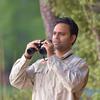

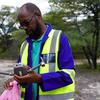

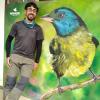





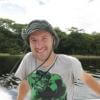
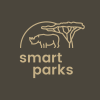
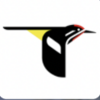










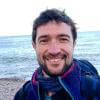









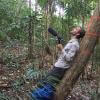




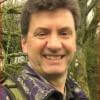




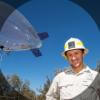





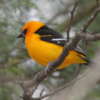
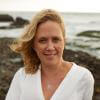
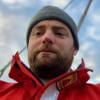


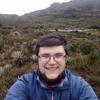


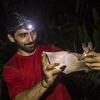
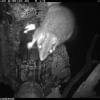
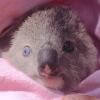



3 November 2022 12:34pm
Hi Ellie - OK sure thing - I can set up an article too.